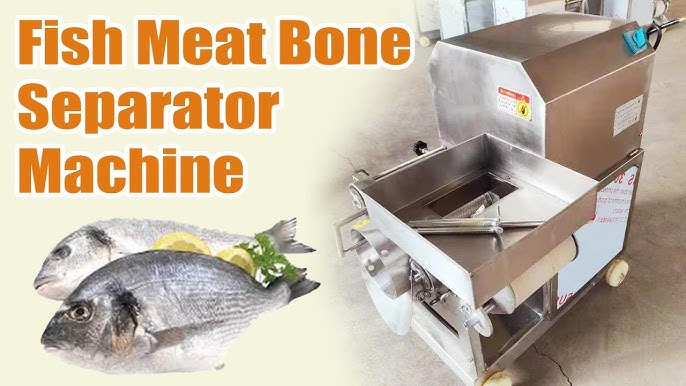10 years of experience as a food machinery equipment manufacturer
10 years of experience as a food machinery equipment manufacturer
The global demand for seafood continues to rise, placing increasing pressure on the fishing and aquaculture industries to enhance efficiency and productivity. A critical stage in seafood processing, particularly for value-added products, is the separation of fish meat from bones, skin, and fins. Traditionally a labor-intensive task, this process has been revolutionized by mechanization. Among the notable innovations, fish meat separators, sometimes referred to as deboners or meat-bone separators, have become indispensable tools. In regions with significant fishery outputs, such as Vietnam, these machines play a pivotal role in optimizing operations and maximizing resource utilization.

A fish meat separator is an electromechanical device designed to efficiently extract fish flesh from the skeletal structure and skin. The fundamental principle involves feeding whole, gutted, or headed fish (depending on the machine’s design and the processor’s requirements) into the machine. Inside, a combination of pressure and mechanical action, often involving a perforated drum and a flexible belt, squeezes the flesh through small holes while retaining the bones, skin, and other non-edible parts. The resulting product is a finely minced fish meat, ready for further processing into a variety of products.
Vietnam is a major global player in both wild-caught fisheries and aquaculture, with products like pangasius (catfish), shrimp, and various marine species forming a substantial part of its export economy. The sheer volume of fish processed daily necessitates efficient methods. Manual deboning, while precise, is slow, costly, and can lead to inconsistencies and higher risks of contamination. The adoption of fish meat separators in Vietnamese processing plants has brought about several key advantages:
Most fish meat separators operate on a similar mechanical principle. Fish are fed into an inlet, often after pre-processing steps like heading, gutting, or filleting, although some machines can handle whole small fish. The core of the machine usually consists of a robust, flexible belt (often made of rubber or a durable synthetic polymer) that presses the fish against a rotating, perforated stainless steel drum.
As the drum rotates, the pressure exerted by the belt forces the soft fish flesh through the small perforations in the drum. The bones, skin, fins, and scales, being more rigid or larger than the perforations, are retained on the outer surface of the drum and are continuously scraped off and ejected as waste through a separate chute. The separated, minced fish meat is collected from the inside of the drum.
Key features to consider in these machines often include:
The minced fish meat produced by these separators serves as a versatile base material for a wide array of food products, both for domestic consumption in Vietnam and for export markets. Common applications include:
For seafood processors in Vietnam and elsewhere, selecting the appropriate fish meat separator involves careful consideration of several factors. The type and size of fish predominantly processed will influence the ideal machine configuration. The desired daily or hourly throughput capacity is a primary determinant of model size. Furthermore, the intended application of the separated meat can affect choices regarding drum perforation size and pressure adjustments. Processors must also evaluate the build quality, the reputation of the manufacturer or supplier for reliability and after-sales service, and the overall cost-effectiveness of the investment.
The Vietnamese fish meat separator, and similar technologies employed globally, represents a significant advancement in the seafood processing industry. By automating a traditionally challenging and time-consuming task, these machines offer substantial benefits in terms of efficiency, yield, product quality, and labor optimization. As the demand for processed seafood products continues to grow, and with an increasing emphasis on sustainable resource utilization and food safety, the role of such innovative machinery in modernizing and streamlining fish processing operations, particularly in major production hubs like Vietnam, will only become more critical. They are a testament to the industry’s drive towards greater productivity and higher value creation from aquatic resources.
